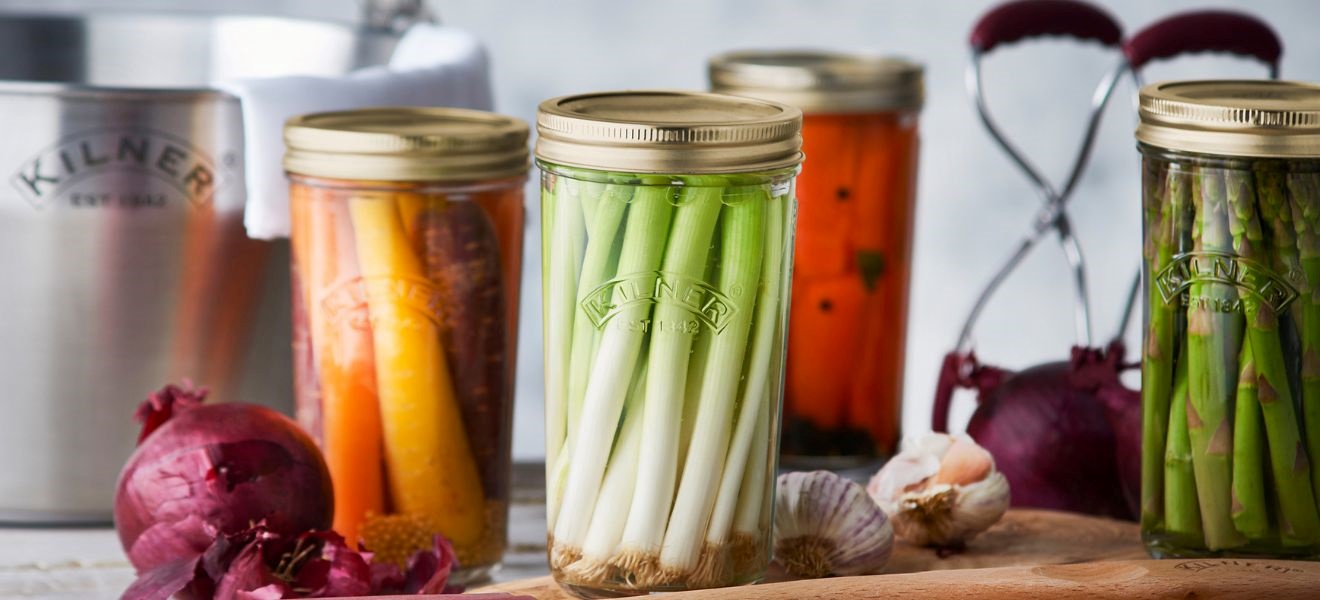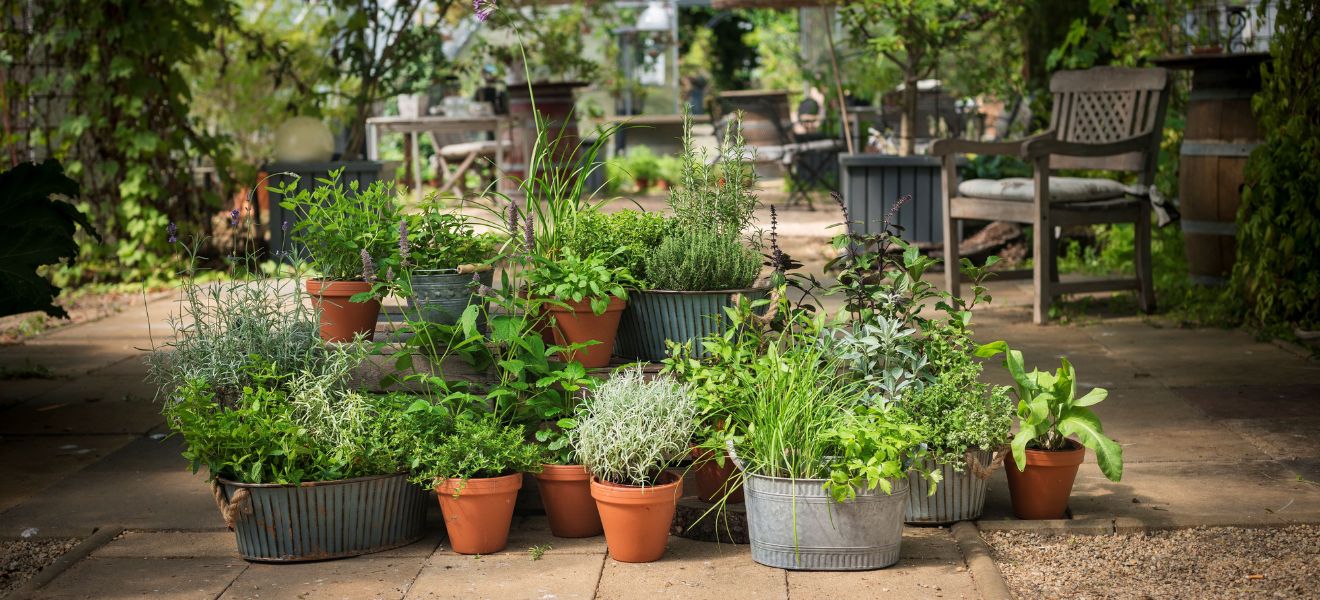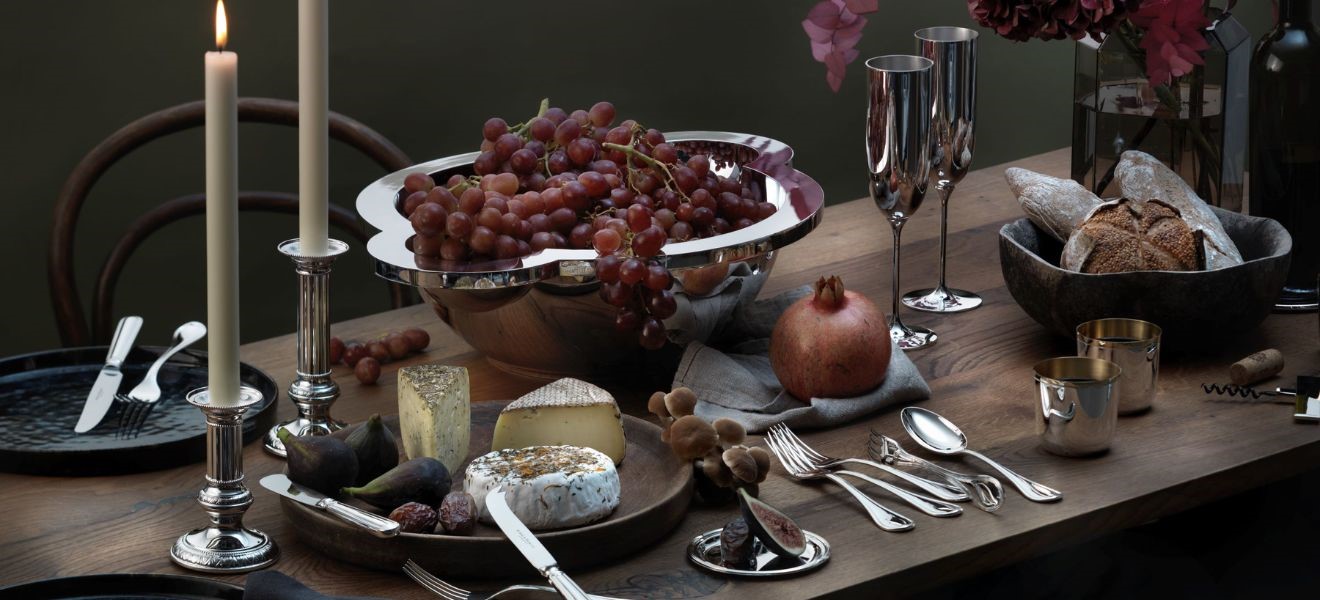There are knives that breathe pure history. The champagne sabre is one of these captivating traditional knives. Back in Napoleonic times it was the crowning pinnacle of many a celebration. And Ambiente’s international trade fair is just the right place to showcase this classic of gastronomy and festive cuisine. Here we discovered innovations from various manufacturers, including extravagant champagne sabres of polished stainless steel and impressive blades of wild Damascus. We were also impressed by the keen luxury of handmade kitchen knives, also made from Damascus steel.
With a single stroke
They look like swords from a costume drama – adorned with grip cord and tassel, packed in a wooden case and with a stylish presentation stand. Traditionally they should – and do – look theatrical. Almost reverentially we picked up one of these champagne sabres from Italian quality manufacturer Fox and practised our stroke, which had been explained to us at the Ambiente stand of Böker Knives from Solingen, Germany. We then struck with the 40 cm blade and attempted to demonstrate our new-found skills in the art of ‘sabrage’, i.e. the technique of opening a champagne bottle with a sabre. Luckily, the guard on the handle was there to protect us from injury. Two centuries ago, this practice was extremely popular with Napoleon’s victorious troops, the difference being that they would have used combat sabres for the purpose. The sabre is slid rapidly along the body of the bottle to break the top of the bottle away, not cut it off. Glass splinters are forced forward and away by the pressure in the bottle. We had a practice run with a sabre and champagne bottle, but unfortunately ended up returning the bottle intact. According to Böker specialist Bernd Schlemper: “This technique of opening champagne bottles is very popular at weddings and at New Year.” Whereas restaurants often buy champagne sabres as an enhancement to their fine wine offering, young couples and families also acquire these robust implements to hand them down to future generations.

The name says it all
A name that cuts through the air like a rumble of thunder: ‘Viper Mathusalem Damast’. This limited-edition masterpiece from the eponymous Viper manufactory in the Northern Italian town of Maniego gleams with its impressive blade. “This champagne sabre is made from 200 layers of carbon steel, the hand guard from hand-forged 200-layer Damascus steel and the handle from exotic hardwood”, we discovered. Carbon steel is a particularly pure steel to which only carbon and limestone are added, which makes it harder, more robust and durable than other types. It can also be ground particularly fine and sharpens better. Typical for Damascus steel are the individual, ‘wild’ patterns and lines that are created by the technique of folding. ‘Wild Damascus’ is the name given by aficionados to this steel, which is created by individually forging and sharpening numerous thin layers of the metal. A time-consuming process that, of course, comes at a price.
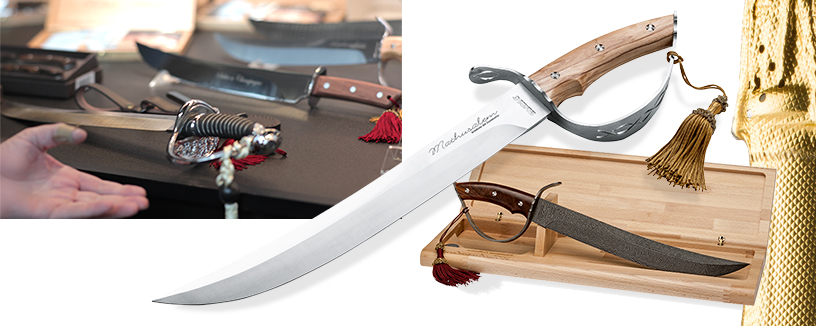
Born from fire
In the beginning was the sword. The forging of Damascus steel was known to many peoples, from the Middle East to Indonesia and Japan. Forging the material layer by layer refined the crystalline structure of the metal and enabled significantly harder weapons and blades to be pulled from the fire. Today the forging process is considerably more technologically complex. The blades consist of many layers of forge-welded steel of different hardnesses that create a constantly shimmering look that is nothing like that of any other blade. In addition to the original folded Damascus steel that is hand-forged in a time-consuming process sometimes lasting several days, there is also industrially produced layered Damascus steel. The popular Japanese kitchen knives – Kai Shun and Santoku – are made from layered Damascus steel. We found exciting examples at the stands of Nesmuk and Franz Güde from Solingen. The impressive 32 cm serrated blade of Damascus steel developed by company founder Franz Güde makes short work of slicing a loaf of bread. The manufacturers frequently use beautiful rarities such as 1500 year-old desert ironwood or black bog oak. Wooden handles have a great advantage in terms of grip due to the tiny fibres that stand up on contact with the moist surface of the hand. Nothing rests better or more securely in the hand than an excellently finished wooden handle.
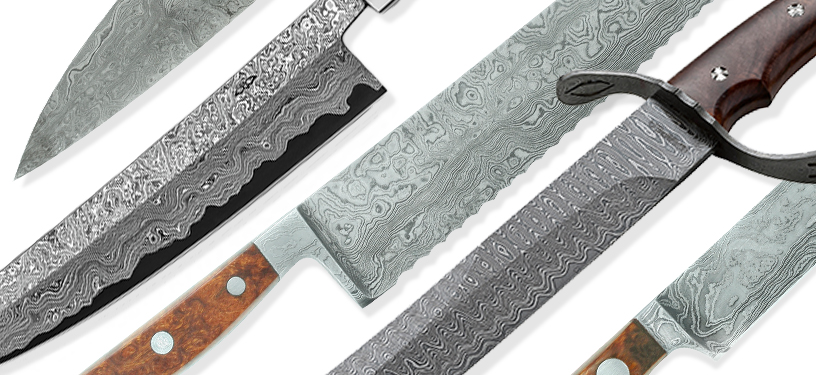
At the cutting edge
Last but not least, comes “possibly the most expensive chef’s knife in the world” from Nesmuk at a keenly priced 80,000 Euro. Its blade consists of 640 layers of Damascus steel with a cutting edge of the finest carbon steel. The handle is made from 5,000 year-old bog oak and the collar is made of finest platinum set with 25 brilliant-cut diamonds. It would almost be a shame to use it for slicing onions. As with any high-quality Damascus steel knife, it not only glides effortlessly through meat, fish and vegetables, it also wears down very slowly and rarely needs to be sharpened. In our opinion it’s an undeniably sexy collector’s item. And doesn’t its artistic texture look like a roadmap of the sense of taste?

Knights of old and camellia oil
There are less expensive knives at Ambiente. Torsion Damascus and the purely decorative etched Damascus are popular with newcomers – and would not look out of place in the hands of a medieval knight. From Sweden comes the new ‘Damasteel’, which is used to make stainless steel knives. Damascus steel, though, tarnishes and is prone to rust which in this care should be taken as a characteristic of its high quality. When the steel is wet, it oxidises with oxygen. Egg white and fruit acids can discolour it. After use the knife should solely be wiped with a cloth and well oiled, preferably with Chinese camellia oil from the pharmacy.


